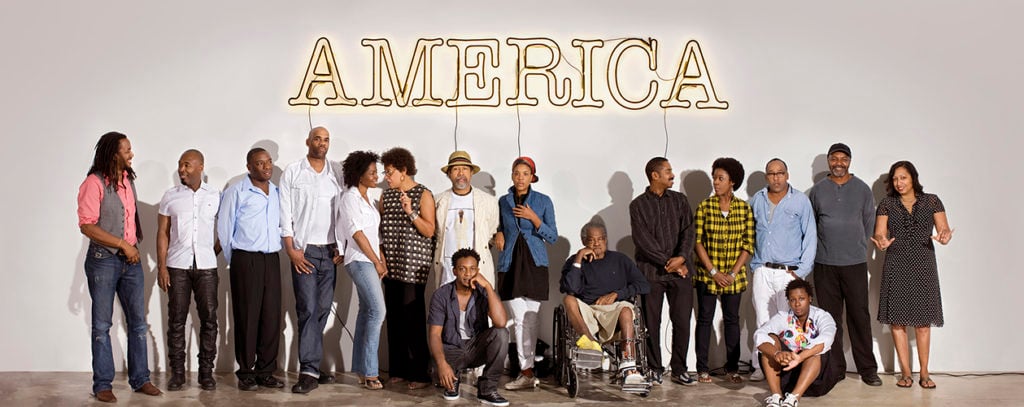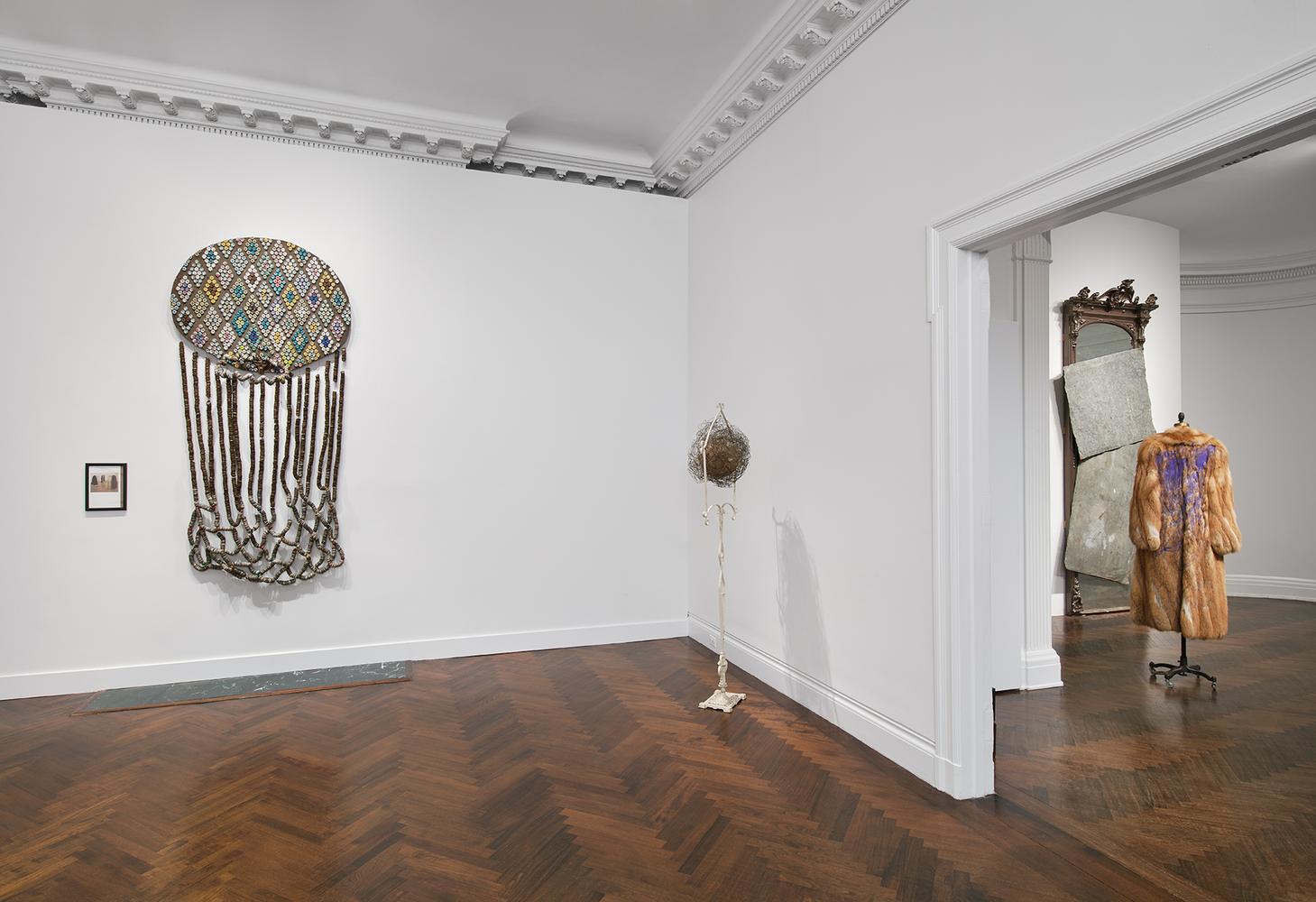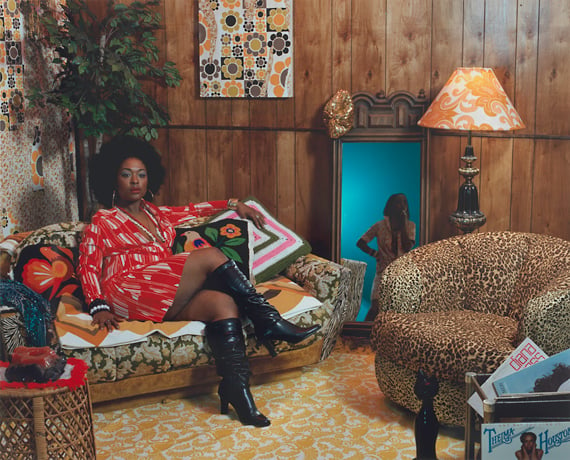Opinion
Detroit Institute of Arts Launches Landmark Initiative to Collect African American Art
Big things are in store for the museum.

Big things are in store for the museum.

Ben Davis

The Detroit Institute of Arts has acquired Bird, a 1990 sculpture by David Hammons, from the well-reviewed mini retrospective of his work at New York’s Mnuchin Gallery earlier this year.
With “a likely price tag of at least a million dollars, it would be one of the most expensive pieces of contemporary art the DIA has bought in two decades,” according to the Detroit Free Press‘s scoop on the new initiative.
The assemblage by the renowned African American conceptualist consists of a basketball wrapped in chicken wire, suspended within the frame of a white-painted Victorian birdcage.

Installation view of “David Hammons: Five Decades” at Mnuchin Gallery, with Bird (1990) at the center. Image: Courtesy Mnuchin Gallery.
Back in October, newly appointed DIA director Salvador Salort-Pons told the Free Press, “The goal is to have the DIA be a mirror of the society in which we live and diversity is a key for that.”
The purchase of the basketball-themed artwork heralds the beginning of a full-court press by the DIA to make good on this promise.
The Free Press report on the new initiative makes it sound as if big things are in store:
With the Hammons purchase approved by the DIA board on Wednesday, the museum formally launched a landmark, three-year, multimillion-dollar initiative to deepen its commitment to African-American art. The plan includes acquisitions, exhibitions, artist commissions, community partnerships, staff development and internships. Driving the initiative is first-year director Salort-Pons’ ambition to broaden the appeal of the DIA, making it more relevant to metro Detroit’s culturally diverse audiences and starting with the city’s overwhelmingly black majority.
The new direction represents the first major shift in programming and collecting priorities since the Spanish-born Salort-Pons, the 46-year-old former DIA curator of European art, succeeded Graham Beal as director last fall. The commitment could transform the DIA into a true national power when it comes to collecting, exhibiting, studying and interpreting African-American art.

Mickalene Thomas, Sista Sista Lady Blue (2007). Courtesy of the artist, Artists Right Society, SFMOMA and the Museum of the African Diaspora.
One of the catalysts for the more aggressive focus was the success of “30 Americans,” the touring show organized by the Rubell Family Collection that came to DIA last October (it’s currently at the Cincinnati Art Museum), featuring highly touted African American contemporary artists like Kehinde Wiley, Mickalene Thomas, and Nick Cave.
That show drew close to 50,000 visitors, with 46 percent of the audience identifying as African American. Normally, African Americans make up only 10 percent of the museum’s visitorship.
The exact details of the new initiative are unclear. Other recent DIA purchases include a work by Hank Willis Thomas called Zero Hour (2012), an elaborate, multi-panel photo portrait of fellow artist Sanford Biggers.

Hank Willis Thomas in collaboration with Sanford Biggers, Zero Hour” (2012). Image: Detroit Institute of Arts.
Evidently, the bulk of DIA’s $3.7 million contemporary art purchase fund will now be directed specifically to acquiring African American art.
Ambitious though it is, the DIA’s sharp turn is part of a nationwide trend. “After decades of spotty acquisitions, undernourished scholarship and token exhibitions, American museums are rewriting the history of 20th-century art to include black artists in a more visible and meaningful way than ever before, playing historical catch-up at full tilt, followed by collectors who are rushing to find the most significant works before they are out of reach,” the New York Times reported last year.
For an institution that has had a dedicated center for African American Art since 2000, it appears that the DIA remains late to the game.